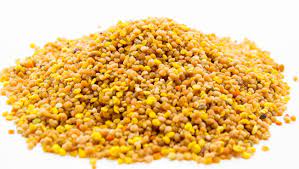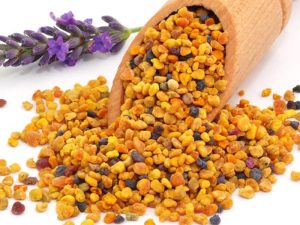HOW TO KNOW REAL HONEY?
17/03/2022WHAT IS PROPOLIS?
23/08/2022Pollen, the male reproductive cell of plants, collects nectar from flowers for honey production by 21-day-old honey bees, while pollen dust adheres to them. The bee turns the pollen dust that sticks on it into lumps with the help of its feet. The pollen, which has become a pollen ball, is carried to the hive in the bee’s pollen sac. Some of the pollen reaching the hive meets the protein needs of the bee colony in the production of royal jelly and the development of the larvae, and some of it is accumulated in the grids provided with pollen traps. Pollen accumulated in the traps is collected daily. Harvested fresh pollen is dried in pollen dryers at a temperature of 30 degrees. On the other hand, wet pollen is packaged as it is harvested from the hive without applying this process. Fresh pollen must be stored and kept in the cold chain. Dried pollen can be stored in a glass jar at room conditions in an airtight package to prevent moisture formation. Pollen is harvested in spring when the flowers are plentiful. During this period, bees carry pollen intensively to the hive as they need a lot of pollen to develop. While the months of March, April and May are the months when the pollen is intense from nature, pollen comes to the hive in the other winter and last spring months, but the bees are not harvested because they are enough for them.
Pollen is an essential food source for the development of young worker bees, brood and baby food glands. Bee pollen is the only food in the world to be called a ‘whole food’. It contains very valuable nutrients. In addition to its nutritional content, it contains vitamins A, B1, B2, B3, B5, B6, B12, C, D, E, K and minerals such as calcium, phosphorus, iron, copper, potassium, magnesium, manganese, sodium.

PROPERTIES OF BEE POLEN
It is collected by 21-day-old worker bees. It is necessary for the development of royal jelly and larvae.
Pollen color varies according to plant species and source.
By making use of the characteristics of pollen, information about the plant flora is obtained. From here, the type and source of honey can be determined.
It is a bee product made naturally.
HOW IS BEE POLLEN CONSUMED?
Bee pollen can be consumed alone or mixed with other foods. For example; 1 teaspoon dry or fresh pollen 1 glass (200 mL) milk, juice, etc. You can drink it by mixing it with honey or you can consume it directly by mixing 1 teaspoon of pollen with honey or yogurt for breakfast.
People who are allergic to pollen and bee products, lactating and pregnant women should consume it under the supervision of a doctor and in consultation with a doctor. Babies under 1 year old cannot use bee pollen.





